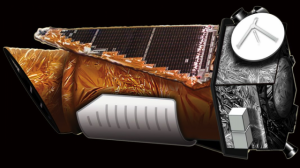NASA gives a second life to telescope ‘Kepler’
Wednesday, May 28th, 2014 9:10:28 by Nadeem Bajwa
Despite having broken an essential device for fine point and bring inoperative year, the Kepler space telescope is still used to make astronomical observations. NASA approved a second Kepler mission, called K2, to continue the search for extrasolar planets that met with great success for four years and also working to extend its scope to other areas of astrophysical research, such as star clusters, young stars and old, active galaxies and supernovae. Yes, your view changes, focusing from now on regions of stars of the ecliptic, ie the imaginary plane of the orbit of the Earth around the Sun while until the fault was continually pointed to a field specific star in the constellation Cygnus. The K2 has been approved after favorable report of experts on the operational missions of the space agency.
Kepler was designed to look like extrasolar planets to Earth orbiting around its star in the so-called habitable zone, ie a range of distances such that the planet’s surface temperature permits that may have liquid water. This was observed more than 150,000 stars to detect light drops tried any of them that could indicate a planet around it is crossing the line of sight from Earth. Is called transit technique. From 2009-2013 perfectly fulfilled his mission and the data from three years of operation (the fourth was still being analyzed) found 3,538 candidates for extrasolar planets, of which 167 were confirmed, a hundred in the habitable zone of its star and a couple dozen with less than twice the size of Earth, as reflected in its expert report.
Of the four reaction wheels necessary to keep the telescope pointed to his field of stars with extreme precision, broke one in 2012 and another in 2013. Needing at least three move and aim, observations as proved already been doing impossible because the telescope needs to counter the effect of solar pressure, photons from the star, on the same artifact in orbit and oriented correctly. Although all seemed lost a year ago, scientists and engineers did not throw in the towel and devised a new strategy to continue using the Kepler profitably. “They have developed an innovative way to restore stability of switching it targeted the telescope so that the solar wind pressure is evenly distributed on the surface,” says NASA. “To maintain that level of stability, the orientation of the space telescope should be almost parallel to its orbital path around the Sun.” Scholars have tried this strategy and the quality of the image obtained is almost the same as before the observatory.
The Kepler mission cost $ 600 million and now approved funding for the extension, K2, is 18 million dollars a year, including data analysis. The first scientific expedition to K2 begins on May 30, announced the head of Charles Sobeck project of NASA.
Short URL: https://www.newspakistan.pk/?p=44572

















